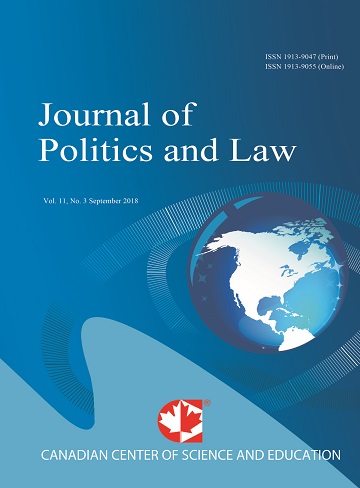Cultural Globalization and Foreign Policy Strategies of the Islamic Republic of Iran (Case Study; the Seventh and the Ninth Governments)
- Alireza Samiee Esfahani
Abstract
Nowadays, cultural globalization is one of the most important aspects of expansion and deepening of capitalistic relations. This process exerts a great influence on all communities, especially non-Western societies, so that it has prompted them to adopt different approaches towards it. Thus, understanding the phenomenon of globalization for countries such as Iran that insists on their specificity (especially on their indigenous cultural values), to identify threats and crises which this phenomenon will be looking for them is of high importance. So, the main purpose of this research is to analyze how the seventh and the ninth governments of Islamic Republic of Iran dealt with the issue of globalization, particularly, its cultural aspect. Indeed, with realization of the differences between post-revolutionary Iranian state and most of existing ideologies in the world and also its geopolitics and strategic sensitive location in the region; all Iranian post-revolutionary governments adopted logical and rational policies in dealing with this worldwide wave. However, as regards the specific national, regional and international conditions, the seventh and the ninth governments were much more exposed to globalization and taking a clear stance. Research findings, according to the theory of ‘James N. Rosenau “Fragmegration” show that the seventh government, based on adopting political culturalism, sought for interaction and ‘convergence’ in the form of “dialogue between civilizations" as well as pacifism in addition to criticizing world’s dominant relations. Whereas, the ninth government adopting justice-oriented approach and political spirituality in the form of public participation and management in managing the world led to “divergence” of the existing global order considering realistic and power-based relations of international order.- Full Text:
 PDF
PDF
- DOI:10.5539/jpl.v10n3p125
Journal Metrics
h-index (2017): 14
i10-index (2017): 39
h5-index (2017): 9
h5-median (2017): 11
Index
- Academic Journals Database
- ACNP
- ANVUR (Italian National Agency for the Evaluation of Universities and Research Institutes)
- Berkeley Library
- CNKI Scholar
- COPAC
- CrossRef
- DTU Library
- EBSCOhost
- Elektronische Zeitschriftenbibliothek (EZB)
- EuroPub Database
- Excellence in Research for Australia (ERA)
- Genamics JournalSeek
- GETIT@YALE (Yale University Library)
- Ghent University Library
- Google Scholar
- Harvard Library
- HeinOnline
- INDEX ISLAMICUS
- Infotrieve
- Jisc Library Hub Discover
- JournalGuide
- JournalTOCs
- LOCKSS
- MIAR
- Mir@bel
- NewJour
- Norwegian Centre for Research Data (NSD)
- Open J-Gate
- PKP Open Archives Harvester
- Publons
- Pubmed journal list
- RePEc
- ROAD
- Scilit
- SHERPA/RoMEO
- Standard Periodical Directory
- Stanford Libraries
- UCR Library
- Ulrich's
- UniCat
- Universe Digital Library
- UoS Library
- WorldCat
- Zeitschriften Daten Bank (ZDB)
Contact
- William TaiEditorial Assistant
- jpl@ccsenet.org
